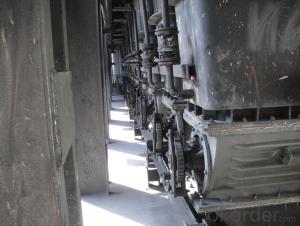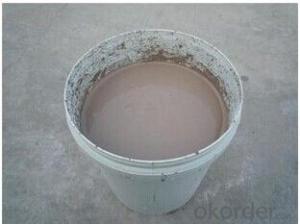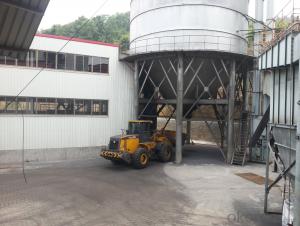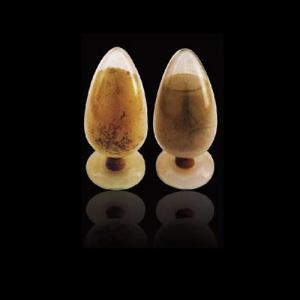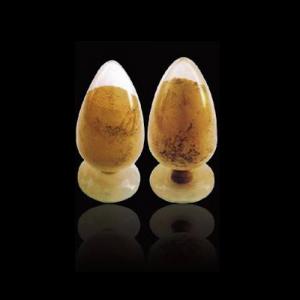Pitch Coke coaly Used As Carbon Raiser Carbon Addititive
- Loading Port:
- Shekou
- Payment Terms:
- TT OR LC
- Min Order Qty:
- 20 m.t
- Supply Capability:
- 1000 m.t/month
OKorder Service Pledge
OKorder Financial Service
You Might Also Like
Factory Background
The factory is majorly running and operating carbon additive (pitch coke, calcined petroleum coke and anthracite), low nitrogen carbon additive, and brake pad making material. Company is the long term supplier of Sinosteel Corporation, Shanghai Carbon Corporation, the plant of SGL Group the Carbon Company in China and some largest special carbon products producing plants.
YUAI also supplies huge amout of high quality carbon additive and graphite carbon additive to steel plants, foundries and ferrotungsten plants. YUAI has been assigned by BAO STEEL as the only organization for processing pitch coke for export purpose. The group’s major products are constantly exported to Japan, Korea, Malaysia, South East Asia countries, Europe and America, which receive praises by our consumers.
The group has invested numbers of calcinators in Anhui China to ensure the capability of producing and processing huge amount of carbon additive. Further investment is on process. According to the orders from customers, YUAI is able to processing and providing different specifications of carbon additive and other products. To provide best quality of products and to offer customers most satisfied service is YUAI’s operating objectives.
Calcined Petroleum Coke
FC:98.5%min,
S:0.5%max
A:0.8%max
V:0.7%max
Mositure:0.5%max
Size:1-5mm
This product is mainly used in steel-making and foundry. Calcined Petroleum Coke
Calcined Petroleum Coke comes from delayed coke which extracted from oil refinery. Although Calcined Petroleum Coke contains a little bit higher level of sulfur and nitrogen than pitch coke, the price advantage still makes it widely used during steel-making and founding as a kind of carbon additive/carburant.
Technology:
Laborary Equpment
In our lab,we has a high precision balance,mullfe furnace,sample making machine, dring box,sulfur measurement instrument and other calibratiing equipments.As a result,before deliverung to our customers,our products have to pass a strict test to ensure the quality and components.The testing reports will be sent to our customers to confirm untill they satisfy with it.
Packaging & Delivery
Packaging Detail:25kg paper bag into 1t weaving bag 5kg, 10kg and 20kg weaving bag into 1t weaving bag 25kg weaving bag put on pallet covered with entanglement wrap product direct into packing bag 25kg paper bag put on pallet covered with entanglement Wrap 25kg weaving bag into 1t weaving bag.
Delivery Details: 7 days

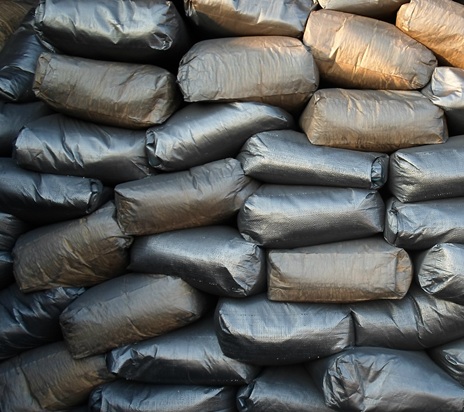
- Q:What are the key characteristics of monolithic refractories for electric arc furnace applications?
- Monolithic refractories for electric arc furnace applications have several key characteristics that make them suitable for the harsh conditions and high temperatures encountered in these environments. Firstly, monolithic refractories offer excellent thermal shock resistance. Electric arc furnaces operate at extremely high temperatures, and the rapid temperature changes that occur during the melting and refining processes can cause significant thermal stress. Monolithic refractories are designed to withstand these thermal shocks without cracking or spalling, ensuring the longevity and performance of the lining. Secondly, monolithic refractories have high resistance to chemical attack. Electric arc furnaces involve the melting and refining of various metals and alloys, which can create highly corrosive atmospheres. Monolithic refractories are formulated with chemically inert materials and additives that provide resistance to the corrosive effects of molten metals and slag, protecting the lining from chemical degradation. Another important characteristic of monolithic refractories for electric arc furnace applications is their high refractoriness. Refractoriness refers to the ability of a material to retain its strength and integrity at high temperatures. Electric arc furnaces typically operate at temperatures above 1500°C, and monolithic refractories are designed to withstand these extreme conditions without significant loss of properties or degradation. Furthermore, monolithic refractories offer good thermal conductivity. This property allows for efficient heat transfer throughout the lining, ensuring uniform heating and melting of the charge material. It also helps to minimize hot spots and thermal gradients, which can lead to uneven wear and premature failure of the lining. Lastly, monolithic refractories are known for their ease of installation and repair. Unlike traditional brick or block refractories, monolithic materials can be cast, sprayed, or rammed into place, eliminating the need for complex masonry work. This not only saves time and labor but also allows for easy maintenance and repair of the lining, reducing downtime and improving overall furnace efficiency. In summary, the key characteristics of monolithic refractories for electric arc furnace applications include excellent thermal shock resistance, high chemical resistance, high refractoriness, good thermal conductivity, and ease of installation and repair. These properties make monolithic refractories ideal for withstanding the harsh conditions and demanding requirements of electric arc furnace operations.
- Q:How do monolithic refractories enhance the performance of ladles and tundishes?
- Monolithic refractories have a crucial role in enhancing the performance of ladles and tundishes in multiple ways. To begin with, their high thermal stability and resistance to thermal shock are well-known. When ladles and tundishes are subjected to extreme temperatures and thermal cycling during the transfer of molten metal, monolithic refractories provide exceptional insulation and structural integrity. This ensures that the ladles and tundishes can endure these harsh conditions without suffering from cracks or failures. Additionally, monolithic refractories offer outstanding resistance to corrosion. In the environments of ladles and tundishes, the presence of molten metal, slag, and other chemicals can lead to corrosion and erosion of the lining. However, monolithic refractories are specifically designed to resist these corrosive agents, extending the lifespan of ladles and tundishes and reducing the need for frequent repairs or replacements. Another advantage of monolithic refractories lies in their ability to form a seamless and tight lining. Unlike traditional brick or tile linings, which can deteriorate over time due to joints, monolithic refractories are typically applied as a single, continuous layer. This seamless lining significantly reduces the risk of metal and slag penetration, ensuring better containment of the molten metal and preventing contamination. Furthermore, monolithic refractories offer versatility and ease of installation. They can be easily shaped and applied to various complex geometries, allowing for customized linings in ladles and tundishes. This versatility also enables faster installation and reduces downtime during maintenance and repairs. In conclusion, the utilization of monolithic refractories in ladles and tundishes leads to improved performance, increased operational efficiency, and reduced costs. Their ability to withstand extreme temperatures, resist corrosion, provide a tight lining, and offer ease of installation makes them the preferred choice in the steel and foundry industries.
- Q:How do monolithic refractories improve the efficiency of ladle and tundish preheaters?
- Monolithic refractories improve the efficiency of ladle and tundish preheaters by providing excellent insulation, high thermal conductivity, and resistance to thermal shock. These properties allow for better heat retention, reduced heat loss, and quicker and more uniform heating of the ladle and tundish, ultimately improving the overall efficiency of the preheating process.
- Q:What are the common applications of monolithic refractories in blast furnaces?
- Monolithic refractories are commonly used in blast furnaces for various applications such as lining and repairing the hearth, taphole, and slag line, as well as for hot repairs and maintenance. These refractories provide high-temperature resistance, erosion and corrosion resistance, and thermal shock resistance, thereby ensuring the efficient and reliable operation of blast furnaces in the iron and steel industry.
- Q:What are the common manufacturing processes used for monolithic refractories?
- Monolithic refractories are commonly manufactured using the following processes: 1. Mixing: The initial step involves accurately measuring and combining the raw materials to create a uniform mixture. 2. Wetting: The mixture is then moistened with water or a liquid binder to enhance its workability and plasticity, facilitating shaping and molding. 3. Forming: Various techniques such as casting, gunning, ramming, or extrusion are employed to shape the wet mixture. Casting entails pouring it into a mold, gunning involves spraying it onto a surface, ramming compacts it using a tool, and extrusion forces it through a die to create specific shapes. 4. Drying: The formed monolithic refractory is dried in a controlled environment with specific temperature and humidity conditions to eliminate excess moisture, preventing cracks or warping. 5. Firing: The dried monolithic refractory is then subjected to high temperatures to achieve the desired properties. This process, known as sintering, promotes particle bonding, increasing the material's strength and stability. 6. Finishing: Following the firing process, additional finishing processes like grinding, polishing, or coating may be employed to enhance the surface quality and overall performance of the monolithic refractory. By employing these standard manufacturing procedures, high-quality monolithic refractories with consistent properties and performance characteristics are produced.
- Q:What are the common testing methods used to evaluate the performance of monolithic refractories?
- There are several common testing methods used to evaluate the performance of monolithic refractories. These methods help to determine the suitability and durability of refractory materials in various applications. Some of the most commonly used testing methods include: 1. Thermal Conductivity Testing: This method measures the ability of a refractory material to conduct heat. It helps in determining the insulation properties of the material and its ability to withstand thermal shocks. 2. Compression Testing: This test measures the compressive strength of the refractory material. It helps in understanding how well the material can withstand external forces and pressure without breaking or deforming. 3. Abrasion Testing: This method evaluates the resistance of the refractory material to wear and tear caused by abrasive forces. It helps in assessing the material's ability to withstand erosive conditions and long-term exposure to harsh environments. 4. Creep Testing: This testing method measures the deformation or sagging of the refractory material under high temperatures and constant loading. It helps in understanding the material's resistance to deformation and its ability to maintain its shape over time. 5. Thermal Expansion Testing: This test determines the expansion and contraction characteristics of the refractory material when exposed to different temperatures. It helps in assessing the material's ability to withstand thermal cycling without cracking or breaking. 6. Chemical Resistance Testing: This method evaluates the resistance of the refractory material to chemical attacks, such as corrosion or erosion caused by chemical reactions. It helps in determining the material's suitability for specific applications where it may come into contact with corrosive substances. 7. Refractoriness Under Load (RUL) Testing: This test measures the ability of the refractory material to withstand high temperatures and maintain its structural integrity. It helps in understanding the material's resistance to thermal stresses and its suitability for high-temperature applications. These testing methods provide valuable data to assess the performance of monolithic refractories and ensure their suitability for specific industrial applications. By evaluating these properties, manufacturers and users can make informed decisions regarding the selection and use of refractory materials.
- Q:How do monolithic refractories resist thermal shock in the iron and steel industry?
- Monolithic refractories are specifically designed to resist thermal shock in the iron and steel industry. This is primarily achieved through their unique composition and structure. Firstly, monolithic refractories are made from high-quality raw materials, such as alumina, magnesia, and silica, which have excellent thermal properties. These materials are carefully selected to provide a high melting point, low thermal conductivity, and good thermal expansion characteristics. Secondly, the manufacturing process of monolithic refractories involves precise control of the grain size distribution and the addition of bonding agents. This results in a dense and homogeneous structure, which enhances their resistance to thermal shock. The bonding agents also play a crucial role in enhancing the refractory's strength and integrity. Additionally, monolithic refractories are often formulated with additives that provide increased resistance to thermal shock. These additives can include zirconia, silicon carbide, or graphite, which improve the refractory's ability to withstand rapid temperature changes. Moreover, monolithic refractories are designed to have low porosity, reducing the penetration of molten metal or slag into the material. This helps to prevent the formation of cracks and spalling, which can occur due to thermal shock. Furthermore, monolithic refractories are often applied as a lining or coating on the surface of the furnace or other equipment. This allows them to form a protective barrier, reducing direct exposure to extreme temperatures and thermal cycling. Overall, the combination of high-quality raw materials, careful manufacturing processes, additives, low porosity, and proper application techniques make monolithic refractories highly resistant to thermal shock in the iron and steel industry. They can withstand rapid temperature changes, prevent cracks, and maintain their structural integrity, ensuring reliable and efficient operation of furnaces and other equipment in this demanding industry.
- Q:What are the factors affecting the lifespan of monolithic refractories?
- The lifespan of monolithic refractories can be significantly affected by several factors. 1. Operating temperature is a critical factor. While monolithic refractories are designed to withstand high temperatures, prolonged exposure to extreme temperatures can cause thermal shock and lead to premature failure. 2. Thermal cycling, which refers to frequent temperature fluctuations, can also shorten the lifespan of monolithic refractories. The refractory material expands and contracts, creating stress that can result in cracking and degradation over time. 3. The chemical environment where the monolithic refractories are used plays a crucial role in their lifespan. Exposure to corrosive gases, acids, alkalis, or molten metals can cause chemical reactions that degrade the refractory material. 4. Mechanical stress, such as abrasion, impact, and vibration, can weaken monolithic refractories and reduce their lifespan. This is particularly important in industries with high mechanical activity, such as steelmaking or cement production. 5. Proper installation and regular maintenance are essential for maximizing the lifespan of monolithic refractories. Inadequate installation techniques or neglecting maintenance can result in weak joints, inadequate anchoring, or the growth of cracks, leading to premature failure. 6. The quality and composition of the monolithic refractory material greatly impact its lifespan. Higher-quality materials with better resistance to temperature, chemical attacks, and mechanical stress tend to have longer lifespans. 7. The design of the refractory lining and its engineering considerations, such as thickness, shape, and reinforcement, also influence the lifespan of monolithic refractories. A proper design can distribute stress more evenly, reduce thermal gradients, and improve overall performance and durability. 8. The way monolithic refractories are operated and handled can affect their lifespan. Factors such as rapid temperature changes, improper cooling or heating procedures, or excessive thermal cycling can all contribute to premature failure. In conclusion, various factors such as temperature, thermal cycling, chemical environment, mechanical stress, installation and maintenance practices, quality of refractory material, design and engineering considerations, and operating conditions all impact the lifespan of monolithic refractories. Proper management and consideration of these factors are essential for maximizing their lifespan.
- Q:How do monolithic refractories impact the overall productivity of iron and steel operations?
- Monolithic refractories have a significant impact on the overall productivity of iron and steel operations. These refractories are used to line the furnaces, ladles, and other high-temperature equipment, providing insulation and protection against extreme heat, chemical reactions, and mechanical wear. By ensuring the integrity and durability of these critical components, monolithic refractories enhance the efficiency and longevity of iron and steel production processes. They minimize downtime caused by frequent repairs or replacements, improve thermal management, and optimize energy consumption. Ultimately, the use of monolithic refractories leads to increased productivity, reduced costs, and improved quality control in iron and steel operations.
- Q:What are the challenges faced in the application of monolithic refractories?
- Some challenges faced in the application of monolithic refractories include proper material selection, achieving proper installation techniques, ensuring consistent and uniform application, controlling drying and curing processes, and dealing with potential shrinkage and cracking issues. Additionally, monolithic refractories often require skilled labor for installation and maintenance, and they may be susceptible to erosion, thermal shock, and chemical attack in certain environments.
1. Manufacturer Overview |
|
|---|---|
| Location | |
| Year Established | |
| Annual Output Value | |
| Main Markets | |
| Company Certifications | |
2. Manufacturer Certificates |
|
|---|---|
| a) Certification Name | |
| Range | |
| Reference | |
| Validity Period | |
3. Manufacturer Capability |
|
|---|---|
| a)Trade Capacity | |
| Nearest Port | |
| Export Percentage | |
| No.of Employees in Trade Department | |
| Language Spoken: | |
| b)Factory Information | |
| Factory Size: | |
| No. of Production Lines | |
| Contract Manufacturing | |
| Product Price Range | |
Send your message to us
Pitch Coke coaly Used As Carbon Raiser Carbon Addititive
- Loading Port:
- Shekou
- Payment Terms:
- TT OR LC
- Min Order Qty:
- 20 m.t
- Supply Capability:
- 1000 m.t/month
OKorder Service Pledge
OKorder Financial Service
Similar products
New products
Hot products
Related keywords
